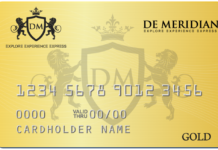Denmark is a small country recognized as the “Pearl of the Scandinavian Peninsula.” This is not by chance; the true treasures of tradition and past are focused in the limited area of this magnificent country.
Denmark has just earned a lot of popularity among tourists.
Cruises are very popular; a boat voyage combined with a visit to many Scandinavian nations will give genuine enjoyment and permanent impressions.
Let’s learn more about this small country with these 10 interesting facts about Denmark!
They have the world’s oldest flag.
Many people are aware of the Dannenberg, or ‘Danish Cloth,’ which is a white combination on a crimson background.
The flag, which dates back to the 14th century, is said to have appeared during the war of Lyndanisse in 1219, stimulating the Danes to conquest over Latvia.
During the next 100 years, the flag was finally adopted. While it isn’t the oldest flag ever, it does hold the Guinness World Record for the highest continuous use of a national flag.
The monarchy, on the other hand, is even older.
The Danish Monarchy is even aged than the flag. The monarchy has breathed since Gorm the Old organized it in 935, and it still survives now.
Initially an elective monarchy, it became hereditable in the 17th century and then a constitutional monarchy in the 19th century.
Queen Margrethe II is the reigning monarch, the first female monarch since her namesake Margrethe I died during the Kalmar Union in 1412.
The Monarchy of Denmark has a model Prince
Prince Nikolai, Queen Margrethe’s eldest grandson, has a unique career for a royal.
As a model, the 19-year-old Prince is presently wowing catwalks all over the world! In 2018, he made his bow while stepping for Burberry at London Fashion Week.
Since then, he’s struggled as a model for Dior designer Kim Jones, who has a Danish mother.
He isn’t the first prince to walk the catwalk, but he is maybe unique in having his family’s full blessing and backing.
Nikolai is currently seventh in line to the throne, down from third when he was born, so he won’t have to give up his work anytime soon to govern Denmark!
It’s a small state.
Outside of the towns, Scandinavia is recognized for its large open spaces, which include peaks, fjords, and lakes.
That is not the case in Denmark! Our Danish friends reside in small quarters.
It indexes 130th in the globe, just a smidgeon larger than the Netherlands and Switzerland. In terms of magnitude, it falls middle of Maryland and West Virginia.
That is a large country as well.
The Kingdom of Denmark, on the other hand, surrounds numerous islands! Denmark has a total of 443 islands, 70 of which are colonized.
Greenland, the world’s massive non-continental island, is one of those islands. Greenland is a Danish sovereign region.
Foreign affairs and defense are still under the supervision of the mother country, but most other decisions have been transferred to the Greenlandic authority.
When Donald Trump enquired about the idea of “buying the island” from Denmark the island received international fame.
Denmark’s entire land is substantially larger than the country itself. When you add it all up, they’re now the world’s 12th largest country.
A tax-ridden economy
Many tourists to Scandinavia are taken aback by the high expenditure on living.
Denmark has one of the highest sales taxes in the world, at 25%. Denmark also has one of the greatest income tax rates in the world, with Danes paying the government up to 45 percent of their revenue.
Surprisingly, inquiries show that 90% of Danes are comfortable with the level of taxation.
They appear to be happy
Despite the reality that Denmark is currently ranked second in the UN’s World Happiness Report, just behind Finland.
All education is free, and the educational and healthcare policies are both internationally recognized.
So paying higher taxes may not be as unpleasant as people in lower-taxed countries believe!
The Danes are experts at ‘playing well.’
Mostly people thinkthat the thrill of opening a package of parts and seeing a finished model an hour or two later.
Denmark’s most well-known export, especially among youngsters, is Lego. Ole Kirk Christiansen, a carpenter, established the Lego company in the small town of Billund in 1932.
The term has arisen from the Swedish word ‘leg godt,’ which means ‘play well.’ Wooden toys were the company’s first offerings.
They didn’t introduce the standard connecting plastic bricks that we all know and love until 1947.
Since then, the brand has extended into a multibillion-dollar corporation that includes amusement parks and apparel. Most astounding of all, the first bricks will still fit together with modern bricks!
They are well-versed in amusements.
The Danes had relaxation parks long before Walt Disney was even a blip on the radar. In fact, Bakken and Tivoli, the world’s two aged operating amusement parks, are situated in the country. When a natural spring was found in 1583, Bakken was born.
Citizens flocked due to the bad water condition in Copenhagen at the time. Then came the hawkers and entertainers. The park now hosts a distinct range of vendors, entertainers, and rides.
Although access to the park is free, several of the lifts have a fee. The more well-known of the two is Tivoli Gardens, which opened in 1843 and is a relative newcomer.
They’re naturally warm and invite people
The Danes place such a premium on enjoying the original pleasures of life that they have coined the term “hygge” to define it. The term Hoo-ga, which is utteredHoo-ga, resists direct translation.
Instead, it’s a sense of fulfillment that comes from modest pleasures. It’s the polar opposite of stress in particular ways.
Make a cup of cocoa and settle up with a nice book rather than fretting about the bad climate.
Ignore your work anxiety and spend quality time with your friends and family.








![How To Get A Ring Off a Swollen Finger [Update] How To Get A Ring Off a Swollen Finger](https://www.shopplax.com/wp-content/uploads/2024/01/How-to-get-a-ring-off-218x150.webp)
